Drake’s progress – the making of a cult menswear brand
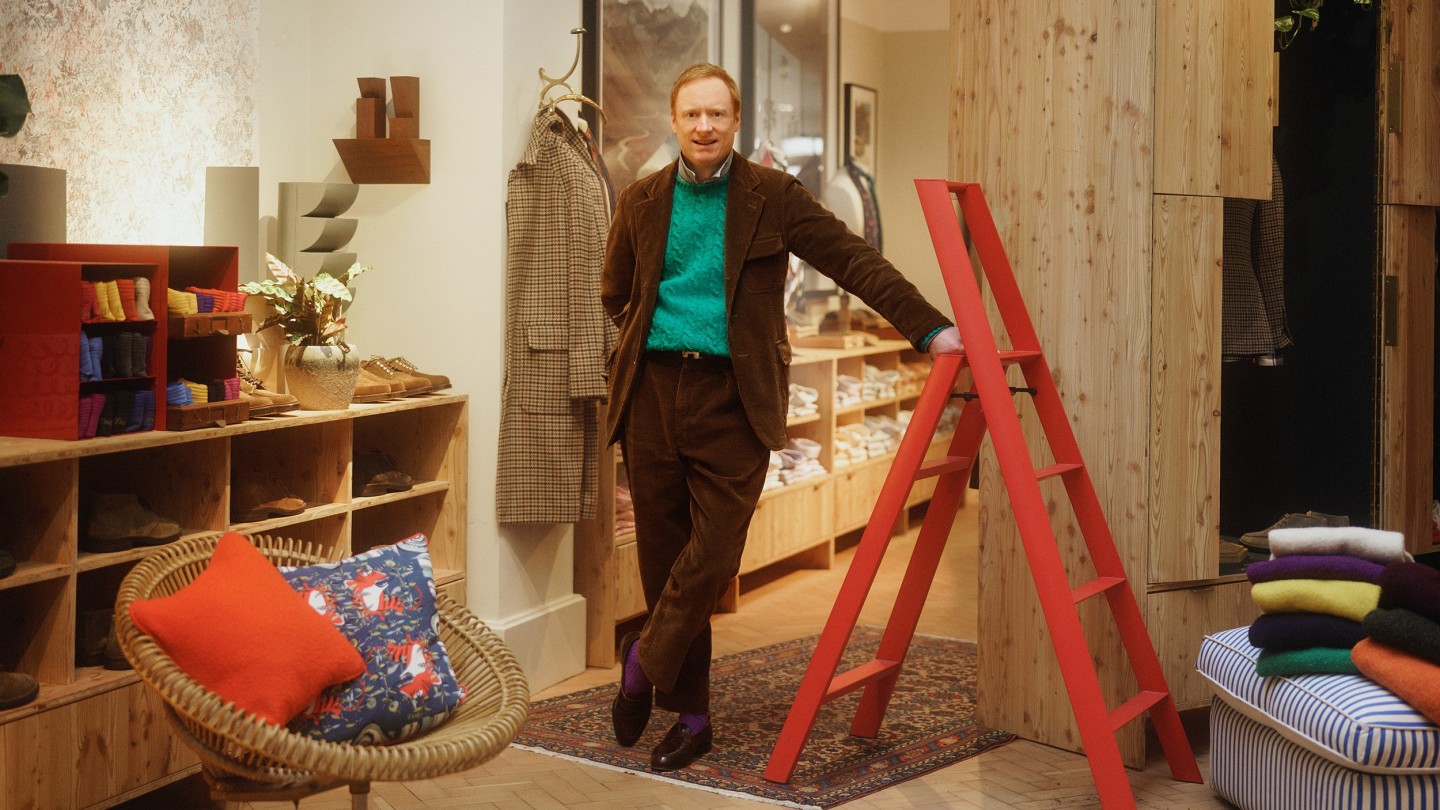
Roula Khalaf, Editor of the FT, selects her favourite stories in this weekly newsletter.
I don’t consciously think about being a ‘brand’,” says Michael Hill, who is sitting at the bar of 45 Jermyn St in St James’s on a cold November afternoon. “You have to follow what’s inside your own company. You follow your own ingredients, your own people, and your own customers. I’m OK with being a brand if you make the definition of ‘brand’ a promise.”
Hill is the creative director of Drake’s, which was founded as a business-to-business tie manufacturer in 1977 and today is one of the most beloved British men’s fashion labels. He’s also unequivocal when it comes to the Drake’s promise: “A great product, great craft, great people – for the long term,” he says, sipping a cup of Earl Grey. “I don’t pretend we’re perfect. We have work to do, but we seem to be going in the right direction.”
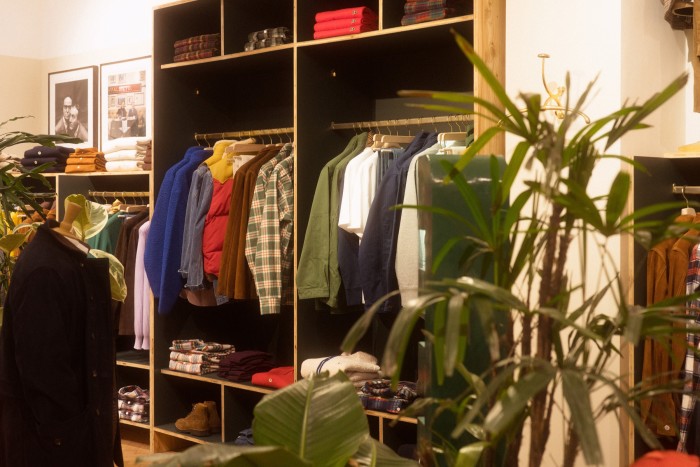
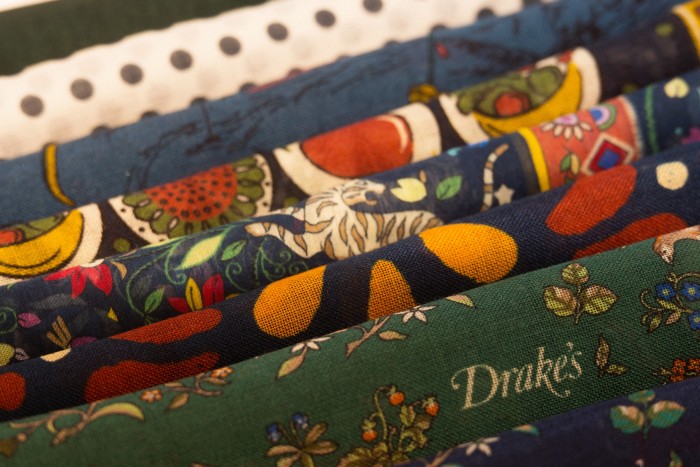
Hill is being modest. He and his business partner Mark Cho (co-founder of another cult menswear brand, The Armoury) took on Drake’s from founder Michael Drake 12 years ago. Prior to that, he was Drake’s right-hand man. When he took over, the company was almost exclusively making scarves, ties and pocket squares in a workshop in east London. Today, he’s grown Drake’s into a multi-category consumer brand with shops in London, New York, Seoul and Tokyo, a second factory in Somerset and an international following. In 2010 the company turned over £4.5mn; in 2021, turnover is forecast at £13mn.
How has Hill made the challenging transition from heritage manufacturer into a modern brand without alienating existing customers? “Our craftsmanship gave us integrity and credibility early on,” says Hill. “That was the main reason we took the business into shirt production.” Hill saved a factory in Somerset from closure in 2012, which has gone from producing a few thousand shirts a year to more than 20,000. These days, Drake’s is as known for its Oxford cloth button-down shirts as it is for its neckwear.
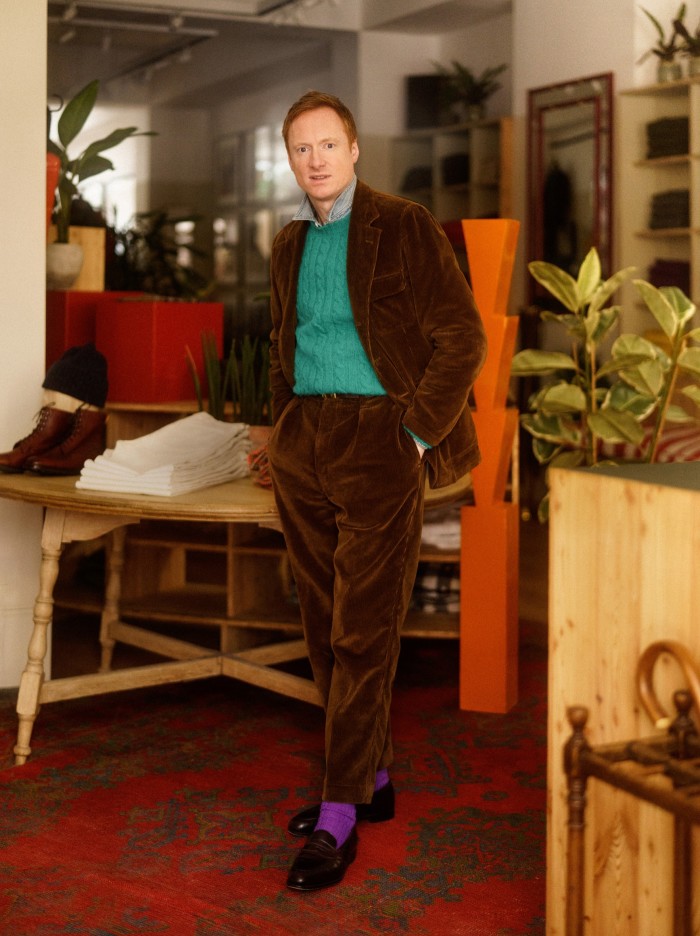
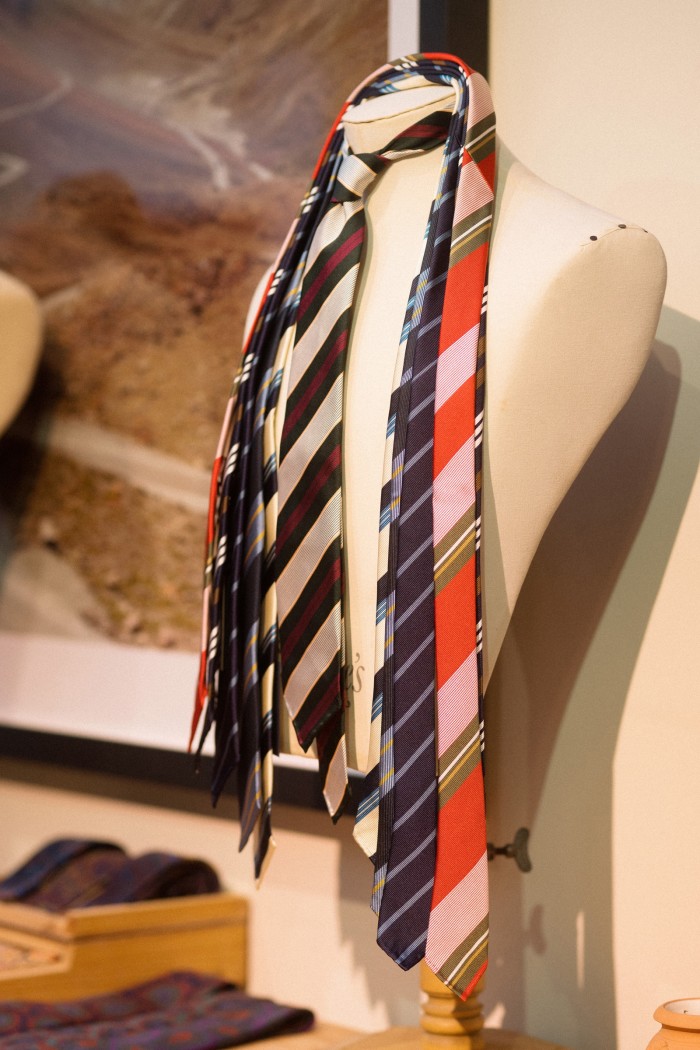
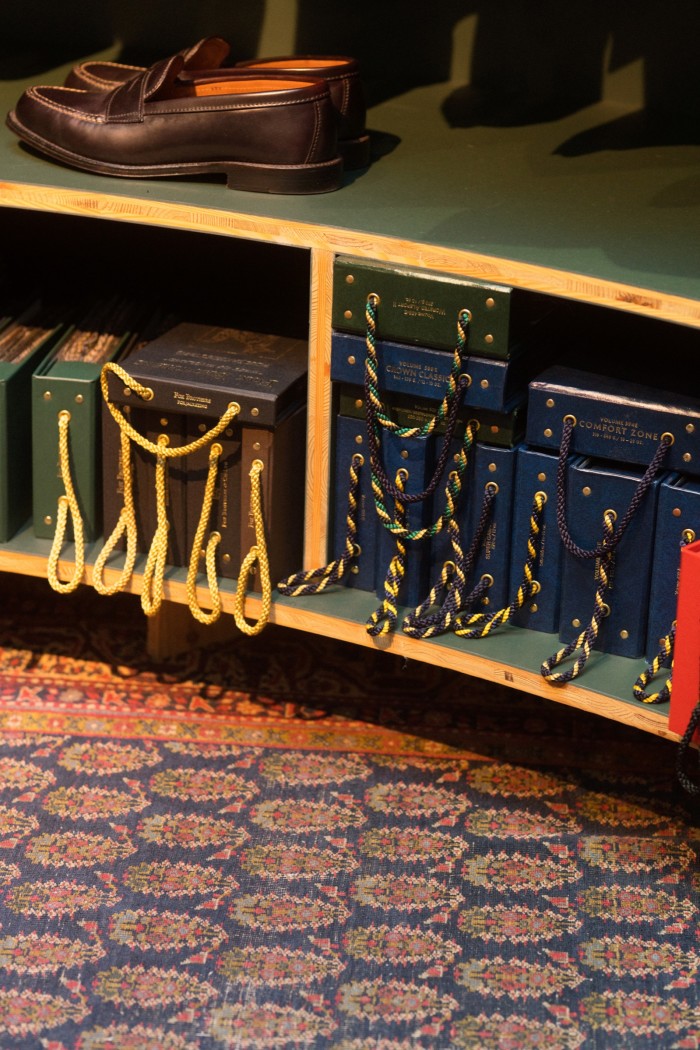
Drake’s has expanded its other categories gradually, in partnership with specialists. Men’s shoes, when they were introduced in 2012, came courtesy of US manufacturer Alden, which still supplies the store today. The first suede jacket Drake’s offered was a co-branded A1 bomber made in Italy by Valstar, and the first raincoat was the Corb II model by Japanese outerwear brand Cohérence. “There was never a conscious drive towards building full-look collections,” Hill says. “It was more a case of discovering other workshops and suppliers and thinking, ‘Oh, I like these jumpers, we’ll do some of these next winter.’”
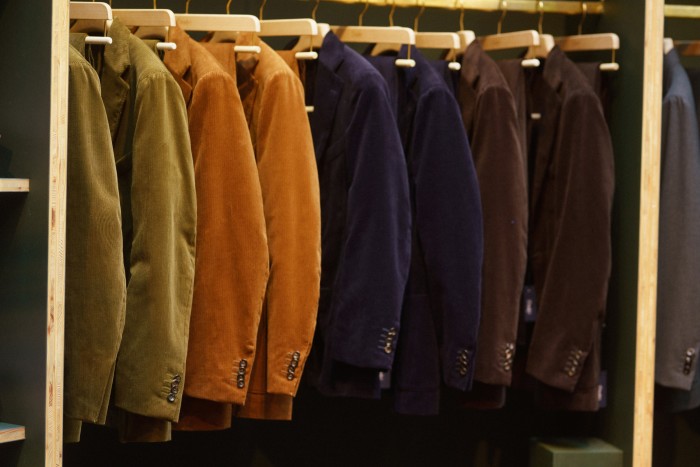
Hill also enlisted photographer and art director James Harvey-Kelly to help create the brand’s modern visual identity. “Drake’s makes me think of colour and preppy style, but there’s also an anti-stuffiness to it that’s really important,” says Harvey-Kelly. “They’re not pompous clothes even though they have a lot of provenance.”
In accordance with modern tastes, the brand has become more casual. In the brand’s lookbooks you’re more likely to see a tweed jacket with the collar popped, thrown over a jersey hoodie and stonewash jeans, than a Neapolitan suit and tie. Hill says: “We still have to be about great clothes and great style. That doesn’t mean our look can’t evolve – I think it’s good that it does. It tests us. If we’re good at what we’re doing, we should be dialled into how guys want to dress.”
Perhaps the best examples of this are the brand’s recent collaborations with Aimé Leon Dore, a buzzy New York label that has just received investment from LVMH. While Aimé Leon Dore is strikingly different in tone (picture coordinating sweatshirts and jogging pants, utility coats, baseball caps and sneakers), the capsules still feel authentic to both companies, perhaps because they represent a true meeting of minds: American streetwear mixed with European prep. “The Aimé Leon Dore tie-up came about very organically,” Hill says. “Teddy [Santis, Aimé Leon Dore’s founder] was a customer in our New York shop. We were making his wedding suit and he said, ‘We have to do something.’”
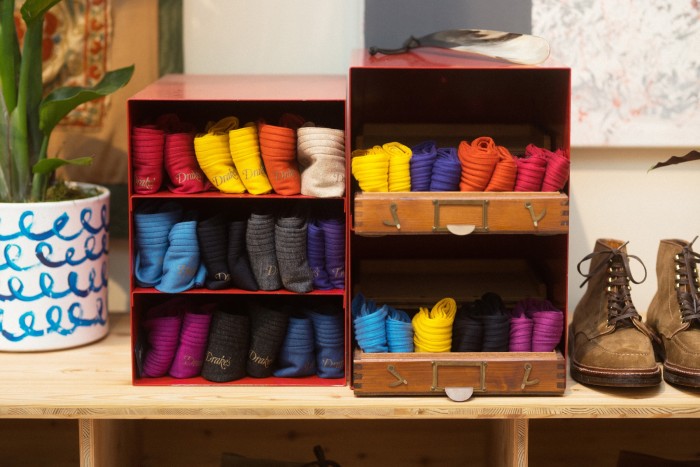
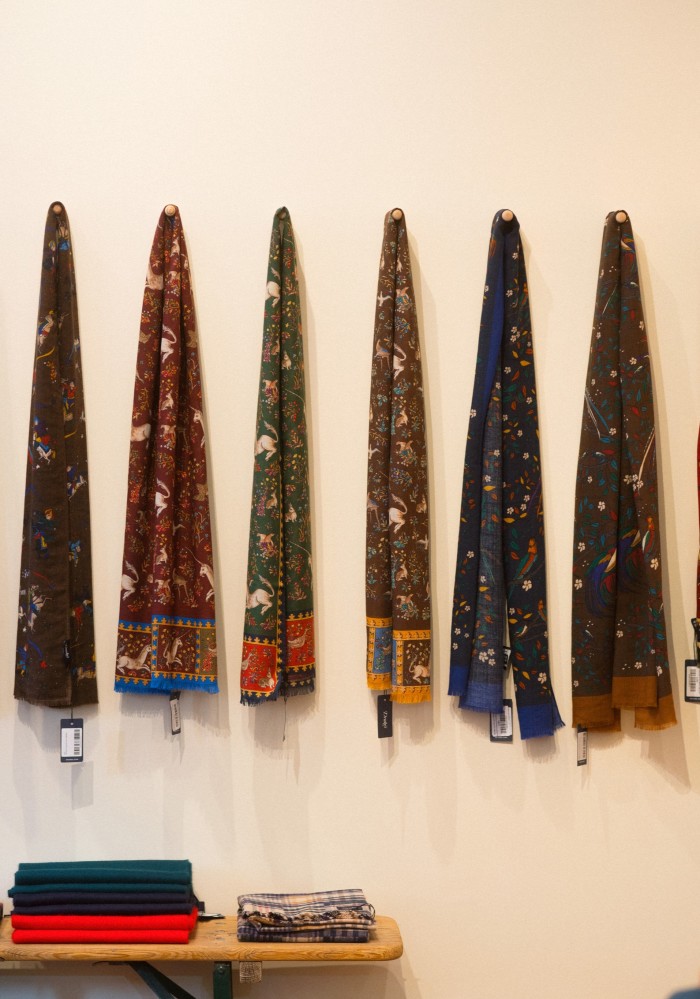
The collections have certainly raised Drake’s profile in the United States, capturing a streetwear consumer who’s in search of something smarter. American designer and friend of the brand Aaron Levine explains: “Like all of us, Drake’s has grown up and evolved. To me, it feels like they’ve become comfortable with who they are, allowing the concept of the brand to really take shape. The taste level is what gets me – Drake’s doesn’t take itself too seriously. It has fun. It’s picked up where almost every other tailor’s shop has fallen asleep at the wheel.”
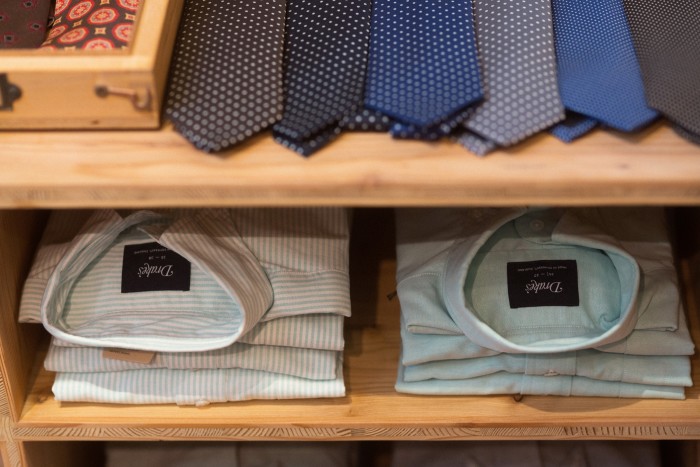
Also in a similar vein to more streetwear-focused brands, Drake’s has adopted a weekly “drop model”, releasing a few curated products every week, rather than launching a whole collection at the start of a six-month season. This has been transformational for Drake’s: giving customers a reason to return has seen online sales increase by 86 per cent between April 2020 and February 2021.
Drake’s success, says Hill, is down to “authenticity”. “It’s about somehow trying to build a great company, I suppose, as opposed to a great brand. What makes my work tick is trying to do things in the right way; being connected to our people, our product and the community we speak to. If that ever changes, it’s time for me to pack up and go home.”

Comments